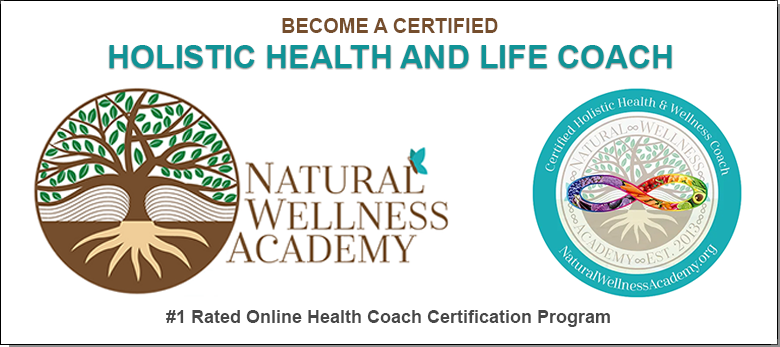In today’s fast-paced world, stress has become an all-too-common part of our lives, affecting both our mental and physical health. Holistic health emphasizes the importance of a balanced mind, body, and spirit, making it essential to find effective ways to manage stress. Mindfulness, a practice rooted in ancient traditions, has gained widespread recognition for its powerful impact on well-being.
Contents
- Introduction to Holistic Health and Mindfulness
- Understanding Stress and Its Impact on Health
- The Concept of Mindfulness
- The Role of Mindfulness in Holistic Health
- Practical Mindfulness Techniques for Everyday Life
- References
Introduction to Holistic Health and Mindfulness
In our rapidly moving society, stress has become a frequent part of daily life, impacting our mental and physical health. Holistic health focuses on maintaining balance between the mind, body, and spirit, highlighting the need for effective stress management techniques. Mindfulness, a practice with ancient roots, has garnered significant recognition for its profound effect on overall well-being.
Explanation Of Holistic Health
Holistic health is an approach to wellness that considers the entire person, including physical, mental, emotional, and spiritual aspects. It operates on the principle that all these facets are interconnected and must be in harmony for optimal health.
Definition And Principles
At its core, holistic health is about balance. It involves recognizing that our physical health is deeply influenced by our mental state, emotional well-being, and spiritual fulfillment. The primary principles include self-care, prevention, and the use of natural healing methods.
Importance Of A Balanced Mind, Body, And Spirit
Achieving holistic health means nurturing each aspect of our being. A balanced mind can improve physical health, just as a healthy body can positively affect our mental state. Spiritually, feeling connected and purposeful contributes to overall well-being. By addressing each part, we create a more resilient and vibrant self.
Introduction To Mindfulness
Mindfulness is the practice of paying purposeful attention to the present moment without judgment. It has its roots in ancient meditation practices but has been adapted into various forms that suit modern lifestyles.
Definition And Origins
Mindfulness originates from Buddhist meditation but has been secularized and integrated into contemporary wellness practices. It involves techniques that help individuals focus on the present, enhancing awareness and acceptance of their thoughts and feelings.
Relevance In Modern Health Practices
In today’s world, where stress and distractions are rampant, mindfulness offers a way to reclaim mental peace and clarity. It has been shown to reduce stress, improve emotional regulation, and promote physical health. Mindfulness practices are now widely recommended by health professionals as part of a holistic approach to well-being.
Understanding Stress and Its Impact on Health
Stress is a significant factor in our lives that can have profound effects on our overall health. Understanding what stress is and how it impacts us is crucial for managing it effectively and maintaining holistic health.
Definition Of Stress
Stress is the body’s response to any demand or challenge. It can arise from various sources and can be both positive and negative, influencing how we perform and feel.
Types Of Stress (Acute, Chronic)
Acute stress is short-term and usually arises from specific events or situations, like an approaching deadline or a sudden change. Chronic stress, on the other hand, is long-term and often stems from ongoing issues such as a high-pressure job or financial difficulties. While acute stress can sometimes be motivating, chronic stress is harmful and can lead to serious health problems.
Common Stressors In Modern Life
Modern life presents numerous stressors, including work pressure, financial challenges, health concerns, and social relationships. The constant connectivity through technology can also add to stress, as it blurs the lines between personal and professional life, making it harder to disconnect and relax [1].
Physiological And Psychological Effects Of Stress
Stress affects both the body and the mind, leading to a range of symptoms and health issues.
Short-Term And Long-Term Impacts
In the short term, stress can cause symptoms like headaches, muscle tension, and digestive problems. It can also lead to emotional responses such as irritability, anxiety, and sadness. Long-term exposure to stress can result in more severe health issues, including cardiovascular disease, high blood pressure, diabetes, and mental health disorders like depression and anxiety.
Stress-Related Health Issues (E.g., Hypertension, Anxiety, Depression)
Persistent stress can contribute to the development of hypertension (high blood pressure), which increases the risk of heart attacks and strokes. It can also exacerbate mental health conditions like anxiety and depression, making it harder for individuals to cope with daily life. Chronic stress weakens the immune system, making the body more susceptible to illnesses and infections.
The Concept of Mindfulness
Mindfulness is a practice that has gained popularity in recent years for its ability to enhance mental and physical well-being. It involves focusing on the present moment with an attitude of openness and acceptance. To understand its benefits fully, it’s essential to explore its origins, principles, and scientific backing.
Origins And Historical Background
Mindfulness has deep roots in ancient traditions, particularly within Buddhist meditation practices. It has been practiced for thousands of years as a way to cultivate awareness and inner peace.
Roots In Buddhist Meditation
The concept of mindfulness originates from Buddhist teachings, where it is known as “sati” and is a core element of the path to enlightenment. It involves being fully present and attentive to one’s thoughts, emotions, and surroundings without judgment.
Adaptation Into Western Practices
In the late 20th century, mindfulness was adapted into Western health and wellness practices. Influential figures like Jon Kabat-Zinn played a significant role in this adaptation, creating programs such as Mindfulness-Based Stress Reduction (MBSR) that integrate mindfulness into clinical settings to help individuals manage stress, pain, and illness [2].
Core Principles Of Mindfulness
Mindfulness is grounded in several key principles that guide its practice. These principles help individuals cultivate a mindful approach to life, enhancing their overall well-being.
Present Moment Awareness
At the heart of mindfulness is the practice of present moment awareness. This involves fully engaging with the here and now, rather than ruminating on the past or worrying about the future. By focusing on the present, individuals can experience life more fully and reduce the impact of stressors.
Non-Judgmental Observation
Mindfulness encourages observing thoughts, feelings, and sensations without judgment. This means accepting experiences as they are, without labeling them as good or bad. This non-judgmental approach allows individuals to respond to situations more calmly and thoughtfully, rather than reacting impulsively.
Scientific Evidence Supporting Mindfulness
The benefits of mindfulness are not just anecdotal; a growing body of scientific research supports its effectiveness in promoting mental and physical health.
Research Studies And Findings
Numerous studies have shown that mindfulness practices can lead to significant improvements in mental health, including reductions in stress, anxiety, and depression. Research also indicates that mindfulness can enhance cognitive functions such as attention, memory, and executive functioning.
Benefits For Mental And Physical Health
Mindfulness has been found to positively affect physical health by reducing symptoms of chronic pain, lowering blood pressure, and improving sleep quality. It also supports mental health by increasing emotional regulation, fostering resilience, and promoting a greater sense of well-being.

The Role of Mindfulness in Holistic Health
Mindfulness plays a crucial role in holistic health by fostering a balanced connection between the mind, body, and spirit. By integrating mindfulness practices into daily life, individuals can experience profound benefits that contribute to overall well-being.
Mind-Body Connection
The mind and body are deeply interconnected, and mindfulness helps to strengthen this connection. By being present and attentive, individuals can better understand and manage the physical manifestations of stress and emotions.
How Mindfulness Influences Physical Health
Mindfulness practices have been shown to reduce stress hormones such as cortisol, leading to improved physical health. Regular mindfulness meditation can lower blood pressure, improve heart rate variability, and enhance immune function. By promoting relaxation and reducing stress, mindfulness supports the body’s natural healing processes [3].
Mindfulness And The Reduction Of Stress Hormones
Chronic stress leads to prolonged exposure to stress hormones, which can negatively impact health. Mindfulness helps reduce these hormones by calming the nervous system. Studies have shown that individuals who practice mindfulness regularly have lower levels of cortisol and other stress-related chemicals in their bloodstream.
Emotional And Spiritual Well-Being
Mindfulness not only benefits physical health but also enhances emotional and spiritual well-being. By fostering a deeper understanding of one’s emotions and thoughts, mindfulness promotes a more balanced and resilient mental state.
Enhancing Emotional Resilience
Emotional resilience refers to the ability to adapt to stressful situations and bounce back from adversity. Mindfulness strengthens this resilience by helping individuals remain calm and focused during challenging times. It encourages a mindful response to stressors, allowing for more thoughtful and less reactive decision-making.
Promoting Spiritual Growth And Self-Awareness
Mindfulness encourages a deeper connection with oneself, fostering spiritual growth and self-awareness. By regularly practicing mindfulness, individuals can develop a greater sense of purpose and meaning in life. This spiritual growth contributes to a more profound sense of peace and contentment.
Integration With Other Holistic Practices
Mindfulness can be seamlessly integrated with other holistic health practices, enhancing their effectiveness and creating a more comprehensive approach to well-being.
Complementing Yoga, Meditation, And Other Therapies
Yoga and meditation are natural complements to mindfulness. While yoga focuses on physical postures and breathing, meditation emphasizes mental focus and relaxation. Combining these practices with mindfulness can amplify their benefits, leading to improved physical, mental, and emotional health. Other therapies, such as acupuncture and aromatherapy, can also be enhanced through the mindful awareness of their effects.
Synergistic Effects On Overall Well-Being
The integration of mindfulness with other holistic practices creates synergistic effects that boost overall well-being. For example, mindful eating can enhance the benefits of a healthy diet, while mindful movement can improve the effectiveness of physical exercise. By incorporating mindfulness into various aspects of life, individuals can achieve a more balanced and harmonious state of health.
Practical Mindfulness Techniques for Everyday Life
Incorporating mindfulness into daily life doesn’t require significant time or effort. With a few practical techniques, you can easily integrate mindfulness into your routine, enhancing your overall well-being.
Breathing Exercises
Breathing exercises are a simple and effective way to practice mindfulness. By focusing on your breath, you can anchor yourself in the present moment and reduce stress.
Techniques And Benefits
There are various breathing techniques that promote mindfulness. One common method is diaphragmatic breathing, where you breathe deeply into your diaphragm rather than shallowly into your chest. This type of breathing helps activate the body’s relaxation response, lowering stress levels and promoting calmness [4].
Step-By-Step Guide To Mindful Breathing
- Find a quiet place and sit or lie down comfortably.
- Close your eyes and take a deep breath in through your nose, allowing your abdomen to rise.
- Exhale slowly through your mouth, letting your abdomen fall.
- Focus on the sensation of the breath entering and leaving your body.
- Repeat for several minutes, staying present with each breath.
Meditation Practices
Meditation is a cornerstone of mindfulness practice. By dedicating a few minutes each day to meditation, you can cultivate a sense of inner peace and focus.
Types Of Meditation (E.G., Guided, Mantra, Walking)
There are several types of meditation to explore. Guided meditation involves listening to a teacher or recording that directs your attention. Mantra meditation uses repetitive sounds or phrases to focus the mind. Walking meditation combines movement with mindfulness, encouraging awareness of each step and breath.
Tips For Beginners
- Start with short sessions, gradually increasing the time as you become more comfortable.
- Find a quiet, comfortable space where you won’t be disturbed.
- Use resources such as apps or online videos to guide your practice.
- Be patient with yourself and acknowledge that mindfulness is a skill that develops over time.
Mindful Eating
Mindful eating transforms mealtime into an opportunity for mindfulness practice. By paying attention to the experience of eating, you can enhance your relationship with food and improve digestion.
Principles Of Mindful Eating
Mindful eating involves fully engaging with the process of eating, from the sensation of hunger to the flavors and textures of the food. It encourages slowing down, savoring each bite, and listening to your body’s hunger and fullness cues.
How To Incorporate Mindfulness Into Meals
- Begin by taking a few deep breaths before eating to center yourself.
- Notice the colors, smells, and textures of your food.
- Chew slowly and thoroughly, paying attention to the taste and sensation of each bite.
- Put down your utensils between bites to prevent rushing.
- Listen to your body’s signals of hunger and fullness, stopping when you feel satisfied.
Body Scan Techniques
The body scan is a mindfulness practice that involves mentally scanning your body for sensations, tension, or discomfort. It promotes relaxation and body awareness.
What Is A Body Scan?
A body scan is a guided meditation technique where you focus attention on different parts of your body, from head to toe. It helps to identify areas of stress and tension, allowing you to consciously relax those muscles.
Instructions For Practice
- Find a comfortable lying or seated position.
- Close your eyes and take a few deep breaths to relax.
- Begin by focusing on your toes, noticing any sensations without judgment.
- Gradually move your attention up through your feet, legs, abdomen, chest, arms, and head.
- Spend a few moments on each body part, acknowledging any tension and allowing it to release.
- Finish by taking a few deep breaths and gently bringing your awareness back to the present.
References
[1] The Role of Mindfulness in Physical Health
[2] Mindful Movement: A Path to Holistic Well-Being
[3] Mindfulness-based Practices as a Holistic Philosophy and Method
[4] Effects of Mindfulness on Psychological Health: A Review of Empirical Studies






